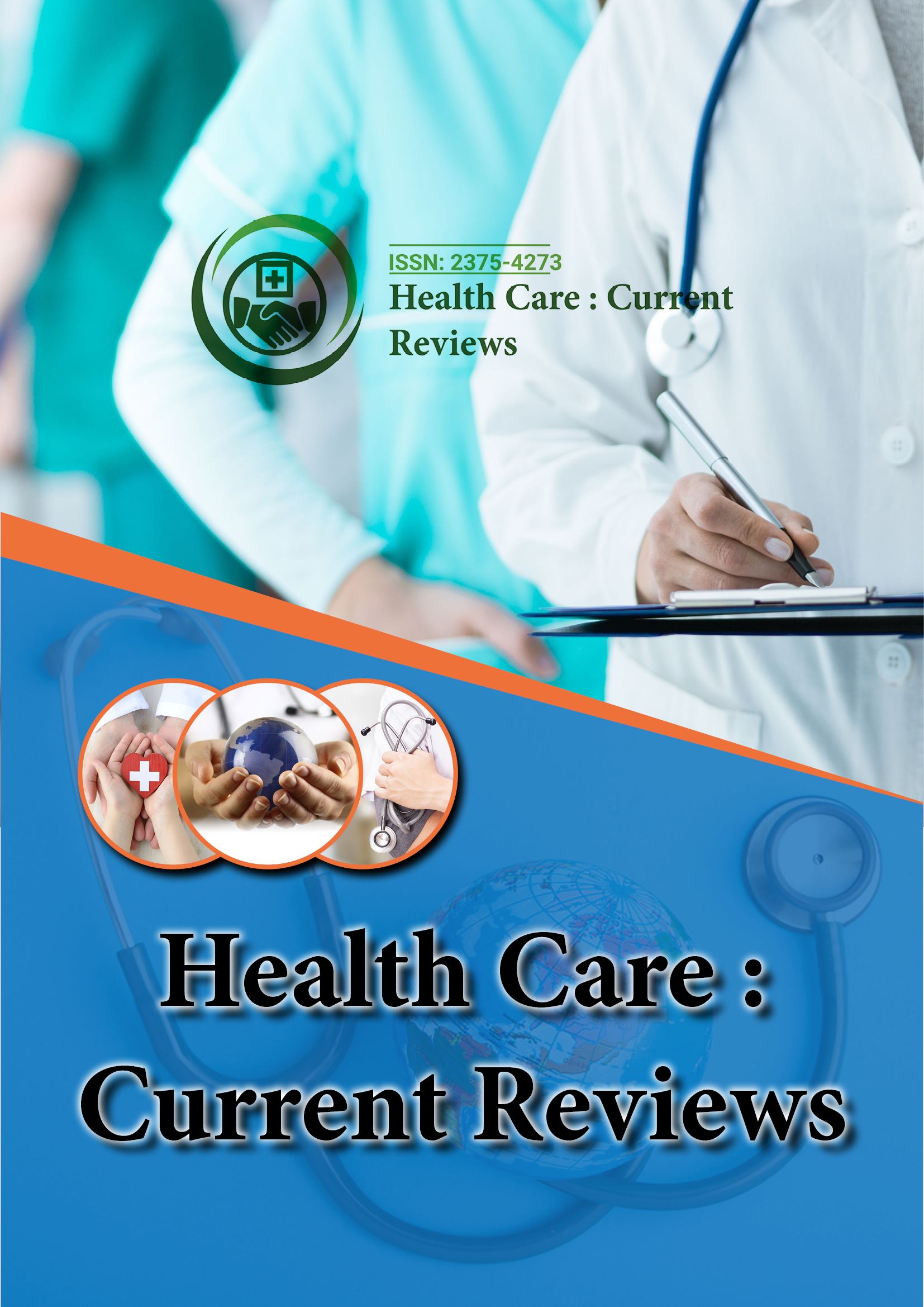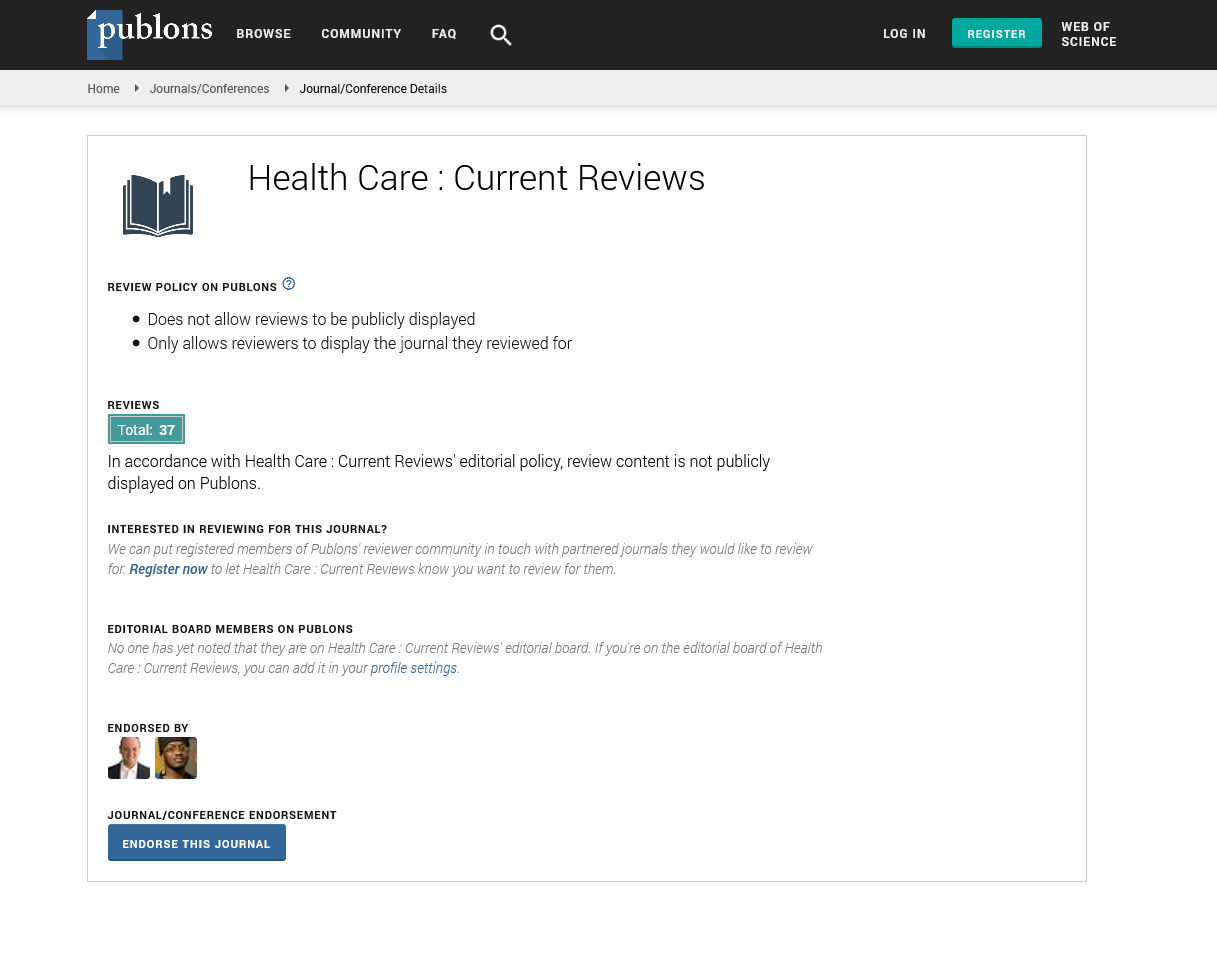PMC/PubMed Indexed Articles
Indexed In
- Open J Gate
- Academic Keys
- RefSeek
- Hamdard University
- EBSCO A-Z
- Publons
- Geneva Foundation for Medical Education and Research
- Google Scholar
Useful Links
Share This Page
Journal Flyer

Open Access Journals
- Agri and Aquaculture
- Biochemistry
- Bioinformatics & Systems Biology
- Business & Management
- Chemistry
- Clinical Sciences
- Engineering
- Food & Nutrition
- General Science
- Genetics & Molecular Biology
- Immunology & Microbiology
- Medical Sciences
- Neuroscience & Psychology
- Nursing & Health Care
- Pharmaceutical Sciences
Commentary - (2022) Volume 10, Issue 11
Role of Global Health and its Importance in Health Care
Susanne Christina*Received: 01-Nov-2022, Manuscript No. HCCR-22-19021; Editor assigned: 04-Nov-2022, Pre QC No. HCCR-22-19021 (PQ); Reviewed: 18-Nov-2022, QC No. HCCR-22-19021; Revised: 25-Nov-2022, Manuscript No. HCCR-22-19021 (R); Published: 02-Dec-2022, DOI: 10.35248/2375-4273.22.10.322
Description
Technical innovation has typically originated in high-income nations. Such advancements were typically judged to be either too expensive or inappropriate for the needs of Low Middle Income Countries (LMICs). Product owners usually avoided joining LMICs because they thought it would be impossible to advertise their products in underserved areas due to high resource requirements. For use in low-income nations, several high-income country technologies were "whittled down" and produced with fewer features. To develop solutions that is affordable and catered to their particular needs, these LMIC inventors. However, due to characteristics like low operational costs and robustness, innovations created for LMICs can be suitable for adoption elsewhere, especially in disadvantaged populations in high-income countries. The process of locating innovations that have already achieved success in low- and middle-income countries and adapting them for use in highincome ones is known as reverse innovation. Reverse innovation can shed light on a range of healthcare-related problems. To improve our knowledge and the potential for reverse innovation dissemination, further study, particularly implementation science research, is required. However, it is unknown whether adopting LMIC. Utilizing content and discourse analysis, the research methodology used to study the maternal outcomes challenge were strengthened. To deliver medical care across time and location, telehealth or telemedicine uses communications technology ranging from the phone to robotics. It is often recognized as a way to exchange medical knowledge in contexts where there is a shortage of qualified individuals. However, the early development of telemedicine was constrained by a lack of internet infrastructure as well as issues with the financial, legal and medical systems. Health authorities have placed telehealth in a supporting role due to care policy limitations. While we are aware of the widespread use of telemedicine in this, we also recognize that LMICs are developing unique applications for telemedicine by leveraging pervasive mobile platforms to enable low-bandwidth solutions aimed at improving maternal care by raising awareness and facilitating better care delivery. Telehealth is widely used in LMICs, particularly for mother and child health. These advancements lead us to believe that telehealth, which utilizes more accessible platforms like mobile phones, should be given the importance it merits within the healthcare system. Providers, patients, payers, families, healthcare teams and communities all collaborate to provide healthcare. When a clinician notices a patient's need, they might let someone else know so they can react accordingly. At least some components of patient care are routinely given to members of the patient's immediate family due to the high expense of healthcare and the lack of competent personnel. Effective communication and teamwork are necessary for success, though. Only if connections between family members and medical teams are simple to find inside the healthcare system will they be beneficial to the patient. The incapacity of many Electronic Health Record (EHR) systems to keep structured patient relationship information was uncovered and fixed by the open MRS platform an open source medical record system intended for usage in underserved areas. This capability for managing patient contacts has been effectively implemented at various LMIC sites. In order to technologically incorporate crucial patient, family and provider relationships within health information systems, they need a comprehensive quality-based care reimbursement model.
Citation: Christina S (2022) Role of Global Health and its Importance in Health Care. Health Care Curr Rev. 10:322.
Copyright: ©2022 Christina S. This is an open-access article distributed under the terms of the Creative Commons Attribution License, which permits unrestricted use, distribution, and reproduction in any medium, provided the original author and source are credited.

